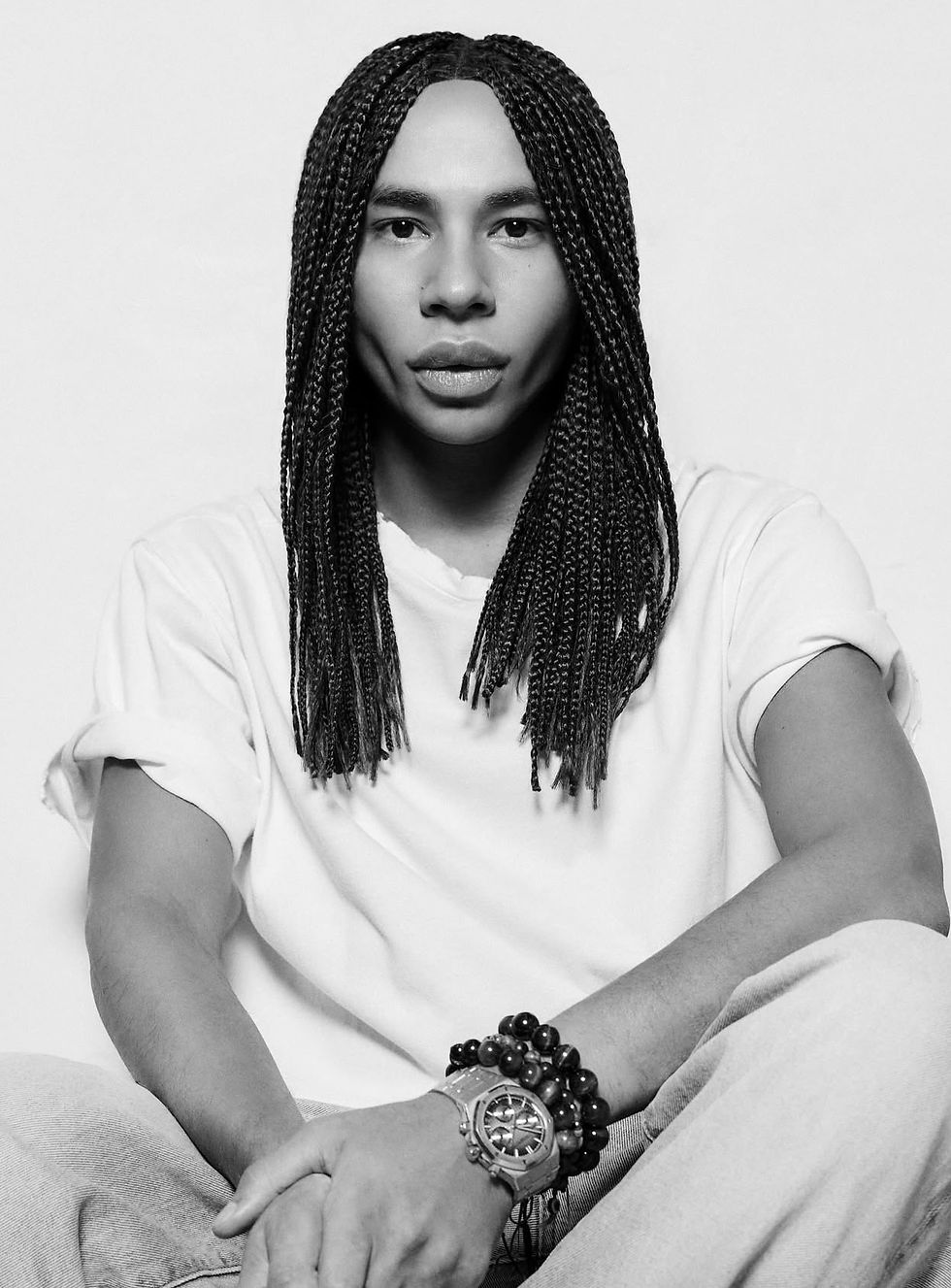End of an Epoch: Olivier Rousteing’s Departure Signals a Larger Shift in Luxury Fashion
- Luxe magazine Switzerland

- Nov 6
- 3 min read
Updated: Nov 7

End of an Epoch: Olivier Rousteing’s Departure Signals a Larger Shift in Luxury Fashion”
The Departure in Context
After a tenure marked by bold vision and cultural resonance, Olivier Rousteing announced his departure from Balmain on 5 November 2025. The house confirmed that Rousteing will relinquish his post as Creative Director, a role he assumed in 2011 at age 25. While some reports reference a 14-year term in that role, others frame his full association with the house as spanning 16 years. The press release acknowledges: “Throughout his remarkable 14-year tenure, Olivier’s visionary approach and creative brilliance propelled Balmain to unprecedented heights.”
This moment is more than the end of one creative leader’s era it reflects broader dynamics in luxury fashion: how houses are adapting (or struggling) under pressures of global expansion, cultural relevance, digital acceleration and internal legacy.
What Rousteing Brought to Balmain
Revitalisation of a heritage house
When he took over, Balmain was a Parisian brand with historic roots but comparatively limited global pop-culture footprint. Under Rousteing, it embraced what might be called “luxury in the age of spectacle.” He turned show-time into event-time: sequins, power shoulders, celebrity front rows, after-parties, social-media momentum.
Championing diversity and community
Rousteing became one of the first Black designers to lead a major Paris heritage house making his representation itself part of the story. He frequently spoke of identity, adoption, his East African heritage, and the importance of inclusive casting and global voices. The “Balmain Army” was not simply a marketing label but a cultural symbol: stars, influencers, global youth aligning around his vision.
Digital-era luxury
At a time when luxury houses were still figuring out how to operate in the age of Instagram, TikTok and global celebrity, Rousteing pushed Balmain into those domains. Runway shows become multimedia content; collaborations and capsules extended the brand; social engagement became central.
Craft and shift
While the early years were about bold maximalism, glamour and visibility, later seasons under Rousteing showed signs of introspection: themes of healing (after his 2020 burn accident), renewal, heritage re-reading.

Why This Departure Matters
Internal momentum and external pressures
Luxury fashion is undergoing transformation: customers demand authenticity, transparency, ethics; digital disruption demands constant novelty; global competition forces consolidation. For a house like Balmain (owned by Qatari fund Mayhoola) the expectation to deliver growth while maintaining brand integrity is intense.
Rousteing’s departure may signal that the house senses it has reached the peak of one cycle and needs a fresh creative voice to initiate the next. As one analysis puts it: “his creations had begun to feel repetitive” and the slowdown in luxury spending adds urgency to change.
Trend of creative refresh
Rousteing is not alone: many heritage houses are refreshing leadership in the 2020s. This suggests a broader pattern: the lifecycle of creative directorships is compressing; the requirement for novelty, global relevance and digital fluency is higher. His exit is thus both individual and emblematic.
What Will Be Missed and What’s Ahead
What will be missed
The kind of bold statement collections that dominated red carpets and social feeds (the celebrity-dressed moments are numerous).
The relatability of a Creative Director whose personal story resonated (from adoption to identity, trauma to triumph).
The marriage of “heritage couture” with “digital spectacle” in one brand voice.
What lies ahead
For Balmain: a transitional phase. The brand will need to define a new creative voice that honours its past but addresses the new imperatives sustainability, inclusivity, slower fashion dynamics, global culture beyond the “celebrity look”.
For Rousteing: freedom. At 40 years of age, he leaves a long tenure behind and has the opportunity to start anew perhaps with a house that values his global sensibility or to launch something his own.
For fashion as an ecosystem: this moment reminds us that creative leadership remains crucial but is no longer enough in isolation. Brands must align purpose, process, planet and people.
Final Thoughts
Olivier Rousteing’s departure from Balmain is not merely the end of a personal chapter it is a marker of how luxury fashion is evolving. His years at Balmain show what one creative mind can achieve when given runway, platforms and global visibility. But they also show how even that success generates the need for renewal.
In an era where “fast cycles” are criticised, where authenticity matters and where heritage brands must speak to new generations, his exit is both a celebration of what was and an invitation to what must come next.

Indeed: “Like every story, this one also has an ending,” Rousteing wrote on Instagram. And now the question becomes: how do brands write the next volume and how does the designer craft his sequel?
Holdener Patricia
Editor In Chef
Luxe Magazine Switzerland
#OlivierRousteing #Balmain #LuxuryFashion #CreativeDirection #FashionLeadership #ParisFashion #Couture #Inclusivity #RepresentationMatters #ModernLuxury #DesignLegacy #FashionIndustry #CulturalChange #Sustainability #DigitalFashion #CreativeCycle #FashionEvolution #LuxuryLeadership #NextChapter #VisionaryDesign #luxemagazineswitzerland


